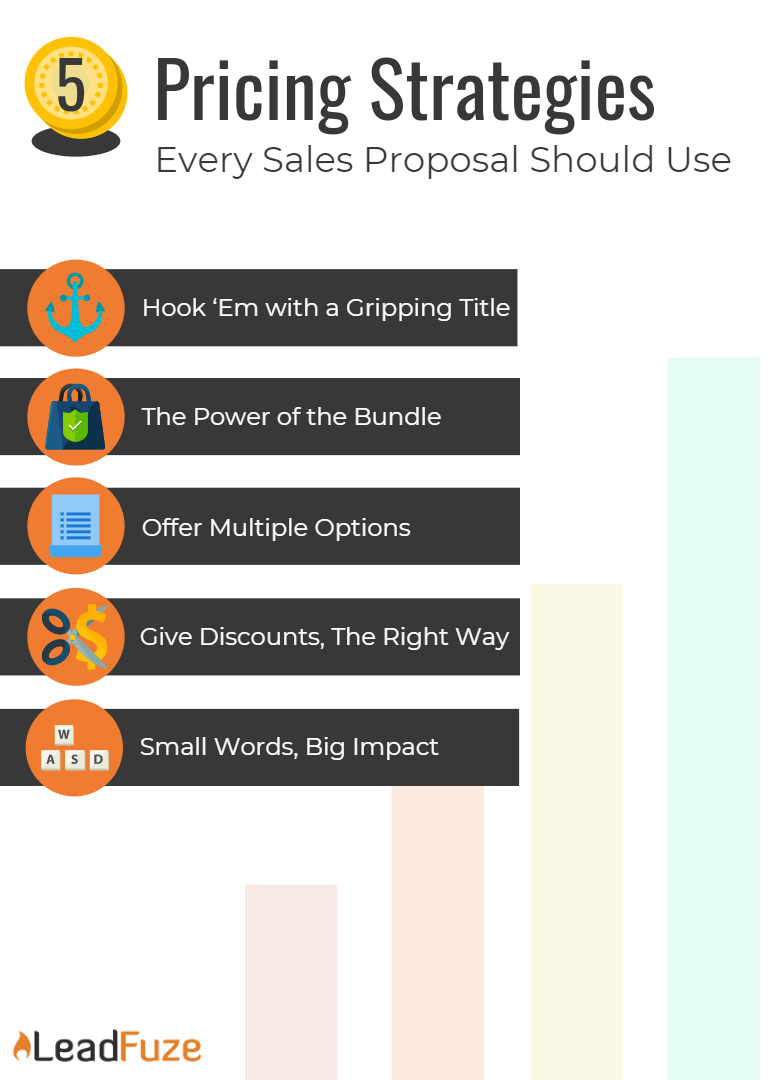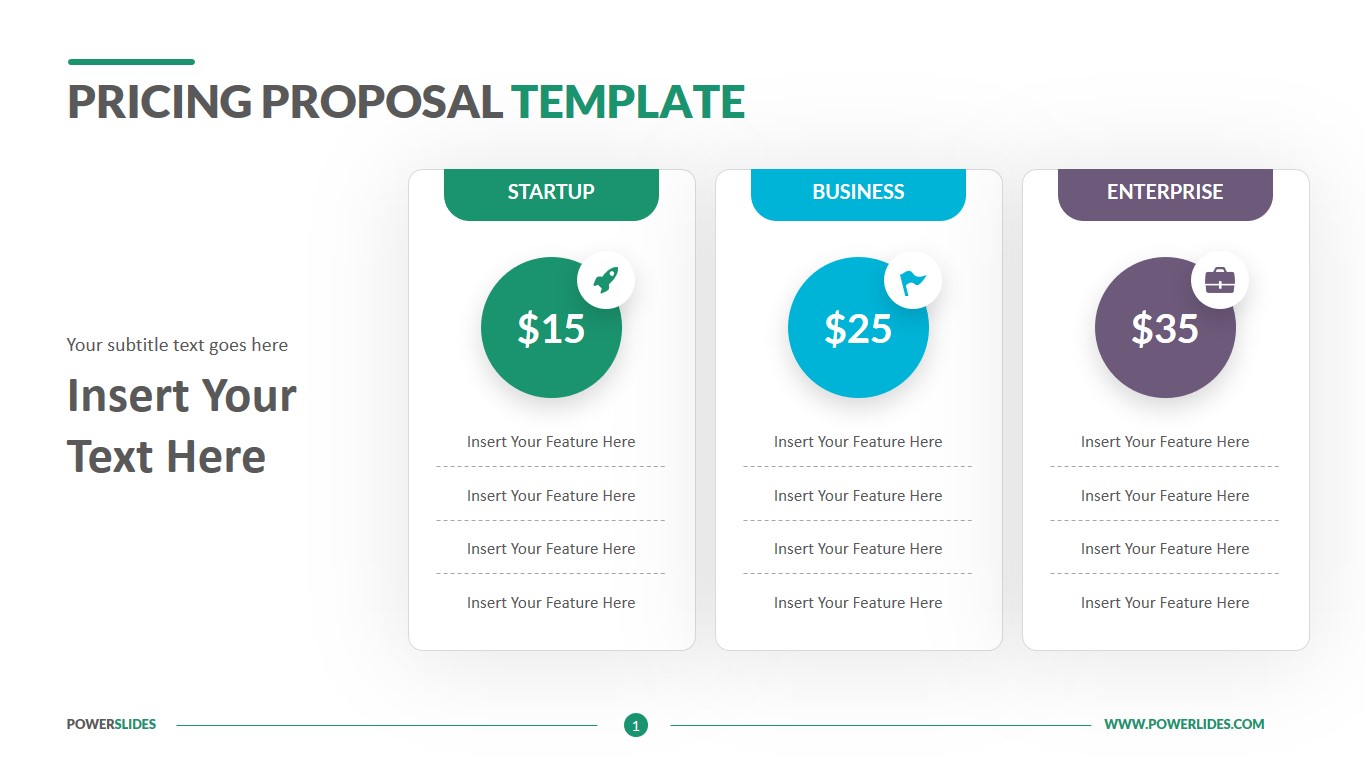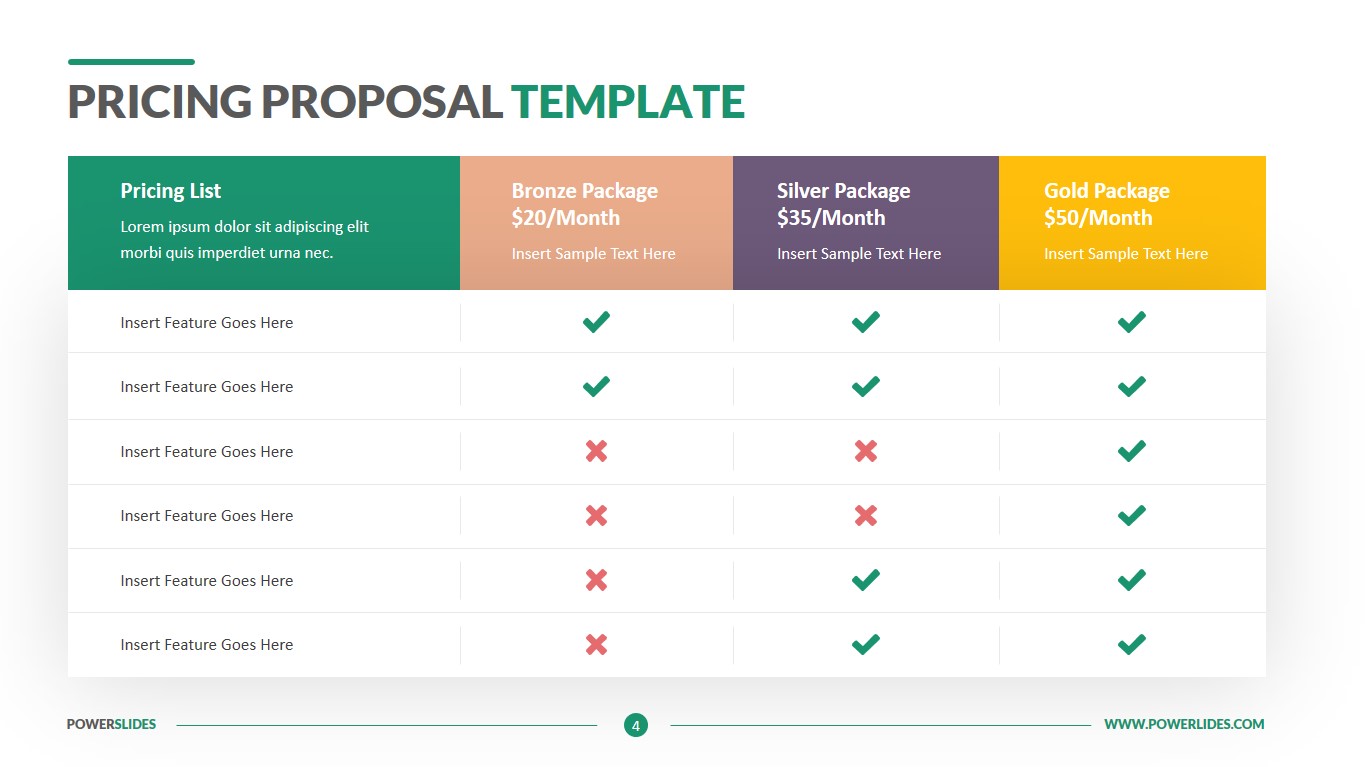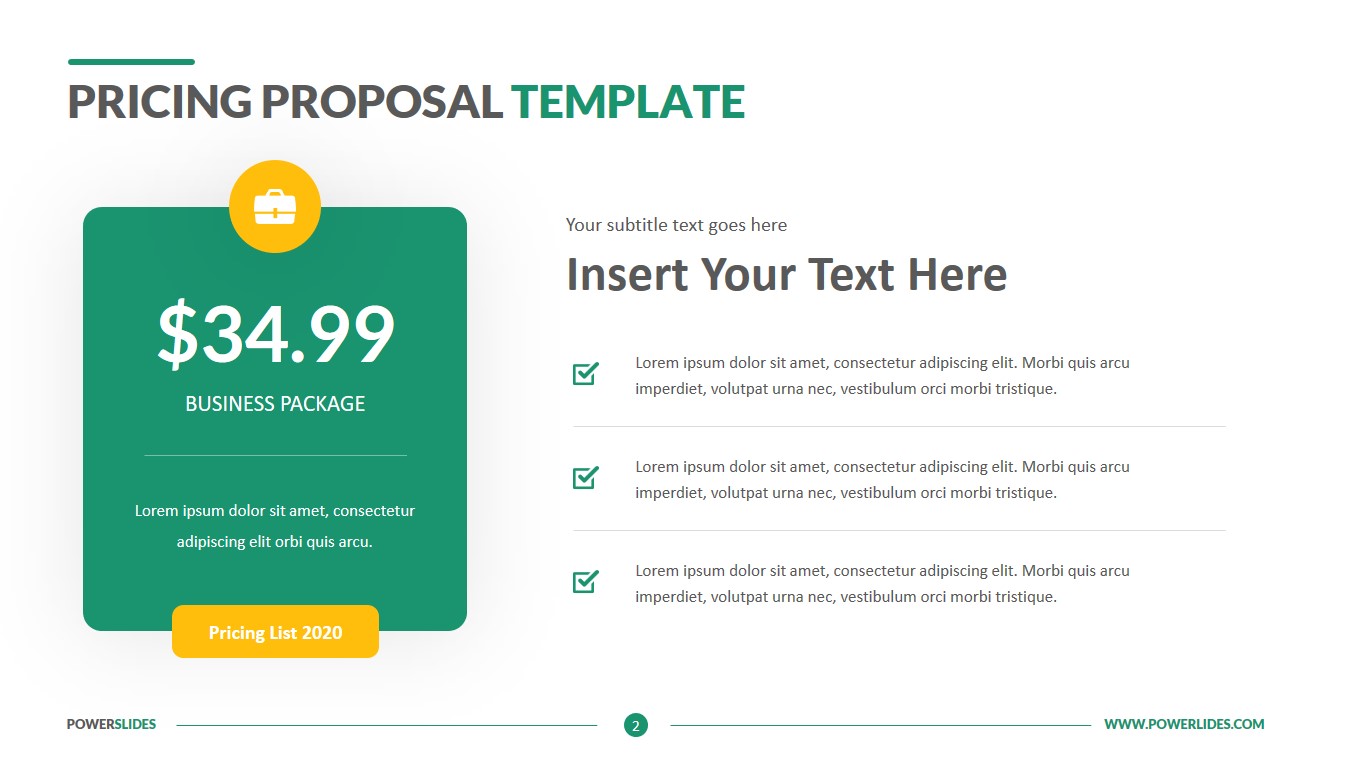How To Present Pricing To Client
[pb]28[/pb] Pricing strategies don't just come down to what you charge, it can come down to how you present your prices.
You're trying to win the client who tops all clients; you've been burning the midnight oil obsessing over every last detail:
- What is going to impress them?
- How can we make ourselves stand out from the crowd trying to win them over?
- I hope we come across as reliable and talented (so trust is already established).
You nearly have it finished. It does an excellent job of highlighting your skills, USPs, and exactly how you're going to turn their life around. No small feat, right?
And it's not over yet; now comes the biggest hurdle… pricing up your offering. Sigh.
Yep, this is undoubtedly the trickiest bit, a hot mess of numbers, procrastination, and headaches.
We can help you leap over the pricing hurdle with 5 effective pricing strategies and 3 price proposal templates that will make it stress-free and easy.
And the best of all? It will prevent the finalization of your proposal is a long, drawn-out deliberation.
Let's dive in!
13 Types of Pricing Strategies Examples
1 Competition-Based Pricing Strategy
This is a pricing strategy in which you set your prices in proportion to the prices of your rivals' products or services.

Pricing your products in response to competition allows you to charge a little lower price, a similar price, or a slightly higher price than your competitors.
Whatever price you decide, maintaining competitive rates is an important component of maintaining on top of the game and keeping your pricing dynamic over the long term.
2 Dynamic Pricing Strategy
Dynamic pricing is a flexible and efficient way for companies to generate more revenue by taking advantage of customer demand at the moment they are ready to buy.
Many customers have complained about dynamic prices, claiming that it's unfair because there's no set price for what you're purchasing. This can be true in some cases, but this strategy often allows businesses to take profits from their highest-valued consumers.
Airlines like Delta use algorithms based on competitor pricing and traffic patterns to maximize profit during high-demand periods while also keeping ticket costs affordable when flights aren't full so everyone has access to them even if just occasionally.
3 Cost-Plus Pricing Strategy
With a cost-plus pricing strategy, businesses only focus on the costs of producing their products or services. This results in the marking up prices to cover that and make money.
When this technique is used by retailers who sell physical goods, it's often called markup pricing since they simply mark up what something actually costs for how much profit they want to see from each sale.
However, it's something that doesn't work as well with service-based companies like SaaS providers whose product offers are far more value than its production price tag could ever hope to achieve.
4 Hourly Pricing Strategy
Hourly pricing can be a very rewarding strategy for some people, especially those who work in the service industry.
This is because it helps to provide motivation and incentive for individuals to do their best when they are on the clock instead of just focusing solely on how fast they complete tasks or projects.
However, this payment method also comes with risks of not getting compensation if you don't have much experience or your time isn't worth what was agreed upon beforehand by both parties involved during negotiations before starting any project together.
5 High-Low Pricing Strategy
It is no secret that stores like Target and Walmart make a killing during the holiday season. One way they do this? Discounts! Stores will often put prices on clearance items to up their sales numbers.

But what some people don't realize is how closely these discounts are related to a high-low pricing strategy—a practice in which companies sell products at a high price for an initial sale before dramatically lowering it when the product becomes less popular or novel.
This means you can get your hands on brand new shoes from Adidas without paying full retail cost while supplies last!
6 Premium Pricing Strategy
Premium pricing is a direct function of brand awareness and perception.
Brands that apply this method are known for providing value and status through their products. They price higher than other competitors to ensure consumers know the product offers both high-quality and perceived luxury or prestige.
Fashion brands often use this strategy because people perceive clothes from those companies as aspirational items due to its costs (especially when compared with cheaper alternatives).

Prestigious tech firms like Apple also employ premium prices on their iPhones in order to maintain the idea that these devices provide quality while still remaining cutting edge even among new releases every year!
7 Skimming Pricing Strategy
A pricing strategy called skimming may seem intuitive, but what does it actually mean? Essentially, the company will charge a high price for their product at first and then gradually lower their prices over time.
This is very different from strategies like "high-low" because with this plan they slowly reduce prices instead of upping them incrementally as in other tactics.
Often times companies use this technique on products that are quickly becoming obsolete to make sure there's enough demand before releasing newer models or updates—think about how DVD players have gone down in value since streaming became popular!
8 Project-Based Pricing Strategy
A project-based strategy price is the opposite of hourly pricing — this approach charges a flat fee per project instead of a direct exchange of money for time. It's also used by consultants, freelancers, contractors, and other individuals or laborers who provide business services.
The cost may be estimated based on how much value one would get from the deliverables they create during their allotted duration and can vary depending on what type of service you are providing.
This system has many benefits; however, it does not work in all scenarios because sometimes clients want to know where every penny goes when paying out funds which doesn't happen with some types of projects like marketing campaigns where there isn't an end goal but rather success metrics along the way such as increased sales.
9 Penetration Pricing Strategy
Penetration pricing is best for those who are not looking to make money overnight. With enough value and a great product or service, you can continue selling your products at an affordable price while making more on the expensive items that people will buy from you when they need it most.
This strategy relies heavily upon marketing the true benefits of what it is your company offers so that customers know how much bang each buck gives them in return!
10 Value-Based Pricing Strategy
A value-based pricing strategy means that you price your products or services based on what the customer is willing to pay.
Even though it can charge more for a product, if there's enough interest in one of its items and data backing up this demand, then they'll set their prices accordingly as well – which will help them boost their customer sentiment and loyalty.

It also helps companies prioritize marketing efforts with customers by understanding who should get certain offers first; all thanks to an interactive approach!
11 Bundle Pricing Strategy
A bundle pricing strategy is when you offer (or "bundle") two or more complementary products or services together and sell them for a single price.
You may choose to sell your bundled products or services only as part of a bundle, which will help maximize savings on the initial purchase; but if selling individual components isn't an option in your industry, don't worry!
Bundling can also be advantageous because it helps get customers hooked on multiple aspects of what you have to offer faster than they might otherwise would with just one item at their disposal.
12 Geographic Pricing Strategy
Geographic pricing is when products or services are priced differently depending on geographical location.
For instance, this strategy may be used if a customer from another country makes a purchase in the United States and needs to pay an increased price because of the exchange rate between their currency and US dollars.
It can also happen for goods that have different costs associated with them (such as wages) based on where you're selling those goods.
13 Psychological Pricing Strategy
Psychological pricing is a way of targeting human psychology to boost your sales. For example, according to the "9-digit effect", even though a product that costs $99.99 is essentially $100, customers may see this as an amazing deal simply because it has 9 digits in its price!
Another way you could use psychological pricing would be by placing more expensive items directly next to (either in-store or online) the one you're most focused on selling so people feel like they can't pass up such circumstances or offer.
Buy 1 get 150% off deals makes customers assume it's too good for them not to take advantage of and purchase at least one item.
5 Best Pricing Strategy Examples

1 Pricing Strategies: Hook 'Em with a Gripping Title
The Front Page Isn't the Only Thing You Should Work on for a Titillating Title; Each Section of Your Proposal Needs One Too.
With so many proposals and pricing models out there, it can be difficult to really stand out from the crowd and get your proposal read through all of its sections in entirety – that's why you want to put effort into titling each one!
The pricing section should have a title as well, like this: 
Ok, this is to the point for sure, but let's face it; it's not moving you closer to a sale.
This is the type of title that no one really reads, they skim over it and just absorb that this is the 'money bit'.
We don't want them to be thinking that. So what's the best way?
The trick here is to remind them of the wealth of benefits they're going to get by choosing your company.
Let's consider how it could be written for maximum impact:

See what we did there? You're taking the client back to the reason they've contacted you and reminding them that this is an investment, they're getting something great for their money that's going to help their company progress.
This takes the spotlight off the dollar signs and onto the end delights they're going to get.
Also, only use terms that the client is going to understand and are relatable to them. Don't jump in with industry jargon or try to be overly clever, because this won't work. They'll tune out.
Keep it short and simple, highlighting the clear benefits to them — it's a winner, I promise!
2 Pricing Strategies: The Power of the Bundle
The bundle technique is a surefire pricing strategy to limit price objections, due to the simple reason that viewing your options in an itemized list is daunting.
The more numbers there are the harder it is for our brain to process them, so it makes complete sense to present them to your client in one, clear figure that makes sense to them.
First, let's look at what to steer clear of when pricing up your offering:

So what's wrong with that? You ask. Well, firstly you're not telling your client what you can do for them, you're not selling your services.
It's just a load of numbers thrown at them, which will guarantee to make them recoil and start searching for cheaper options.
You're inviting the client to pick apart your costings; it's hard for them to think about anything else.
The second big problem here is a little psychological issue called Loss Aversion . The theory is that the psychological power of loss is double that of any gain, which means that people are more willing to take risks to avoid a loss.
What does that mean for our cost estimate?
It means that your client reading the itemized list will experience a perceived loss at every line with a price next to the service.
It evokes a desire to avoid as it's potentially psychologically painful, which is definitely not the feeling you want your clients to be experiencing.
The Pricing Bundle
Following the Loss Aversion theory, the pricing bundle is your best friend. It's going to communicate your value, your expertise, and exactly what you bring to the table; with one bundled up cost.
Let's take a look at one in action, from our marketing proposal template:

- We've got a gripping, benefit-reminding title.
- There's a clear price at the top so they don't skim across the services to reach it at the bottom.
- All of the services are about your added value, telling them in no uncertain terms what handing over their precious money will give them. It hits home that it's an investment, not parting with money with no return.
Our internal research of 25,000 proposals and contracts found that this bundling technique wins a whopping 36% more contracts/jobs than the traditional line item pricing.

Seems like a no-brainer, right?
3 Pricing Strategies: Offer Multiple Options
This is super important because if you only offer one option you're ultimately presenting your proposal to require a 'yes/no' answer.
Offering your client three options rather than one is going to change their thinking from:
"Should I hire this company at that price?"
To a far more productive way of thinking:
"Which of these options are going to give me what I need for the right price?"
In our research of 25,000 proposals and estimates, we also investigated how options affected the outcome. The results showed that an overwhelming 32% more revenue was won with one or two additional options presented to the client.
That's pretty impressive.
And here's something extra to take note of: most people will choose the middle option.
Psychology tells us that people are more likely to go for the value in the middle, just because they automatically resent the high price and don't want to be cheap by going for the low price.
So following this rule, make sure you put the option you want your client to choose in the middle… and the odds are, if you're strategic about it — they will!
There are some specific guidelines that will make sure you hit the nail on the head every time.
- Offer up options that are basic, enhanced, and premium. That way you are offering a broad range, with clearly defined stages.
- Make sure the price difference is actually a difference. There needs to be significance in it, or it'll be even more confusing for them. Spell it out clearly and be bold.
- Give options, a name, price, and description. You need to be clearly communicating exactly what the client will get from each option; but focus on business results, not overly technical descriptions that'll make them scratch their heads.
Let's look at an example of a persuasive set of options for a marketing agency:
Option 1: Brand exploration to cement brand identity £5,000
A five-day strategy session where we delve into the essence of your brand and surface with a powerful, strong, and unique identity. We will create your Branding Guidelines for you to base all your marketing communications on moving forward.
Option 2: Brand exploration, a content marketing plan, and website copy revamp £7,000
Everything you get with Option 1, plus an overhaul of your current website copy, will showcase your new brand online. We will also create a marketing plan to drive an additional 10,000 visitors to your website in a month.
Option 3: Brand exploration, a website revamp, a content marketing plan, and 6 months of social media £12,000
Everything from Options 1 & 2, plus 6 months of ongoing social media promotion which will propel your newly developed brand into the online world. We expect to see 60% more online engagement in the first 6 months.
The likelihood here is your client will go for Option 2; diving straight into a 6-month social media commitment when their brand needs work just isn't going to happen.
The main goal here is to entice the client to pick the option that works for you, the middle-priced option. If they go for the expensive option — great! But that shouldn't be your goal.
By giving choices you're making the client feel in control of the process; they have a say that isn't just 'yes/no'. Click To Tweet
It's not backing them into a corner by opening a bigger conversation where they feel more inclined to feel good about their decision. You may even offer them recurring billing options if needed. Let's be honest, most of your clients are bosses and bosses like to make decisions.
They like to be in control. Giving them a choice will make them happy, which is a big win for you.
4 Pricing Strategies: Give Discounts, The Right Way
So many people get discounting wrong; they dive in trying to retain clients but it comes across as desperate and frantic, rather than calm and giving.
You need to seem appreciative rather than 'I'm going to chop a big lump off the price so you still like me.'
Your discount should reflect that you're reducing the price because you value the potential partnership. You want to give the perception of a professional compromise.
Where do you start? Well, there are two main aspects of discounts that you need to take into consideration:
Context: because you're worth it
You need to make sure you're sending the right signal about what you're worth and the type of behavior you're encouraging.
Think of it this way — if you offer a big discount to a new client, you're basically saying your offering isn't worth that much. You're also setting a precedent for future business with them.
You can't reel them in with low prices, then suddenly flick the switch in the future with highly raised prices. Once it's established, your pricing will be hard to change with a particular client.
A more effective way is to offer a discount if everything's paid upfront — that way you look organized and you manage to avoid the risk of failure to pay later down the line.
It's all in the presentation
How you present the discount is the most important thing to consider. Take a look at these examples:

So say the discount for both of these options is $500, Example 2 is going to put a fire under them because it's a bigger percentage. It's very simple. It looks like the better deal and you get the added bonus of enticing them for an add-on service of social media.
But the real magic happens when you combine these tactics together to make an all-singing, all-dancing discount offer.
Follow these rules, recite them and memorize them; you'll never look back.
5 Pricing Strategies: Small Words, Big Impact
Words are powerful. They can ignite emotions, evoke action, and change perception. The way you write can be hypnotic, we've seen classic writers like Agatha Christie and Mark Twain use hypnotic writing techniques to grip readers. It's an age-old strategy.
You can use hypnotic writing on your pricing pages to convince and persuade. It works, I promise.
You can use hypnotic writing on your pricing pages to convince and persuade. Click To Tweet
The gist uses minimal words, but makes them powerful and evocative to have a high ground in pricing strategy marketing.
Joe Vitale, God of hypnotic writing and author of Hypnotic Writing: How to Convince and Persuade Your Customers with Only Your Words, advises to use words like YOUR, YOU, YES, FREE, LOVE, NEW, DISCOVERY, EASY, SIMPLE, EFFORTLESS, ALERT, ANNOUNCING, BREAKTHROUGH.
These will make your customers sit up and take notice. Words can make people trust you, they are a powerful sales tool that is at your (or your rep's) disposal, not to pointlessly fill the page.
Look at this example:
Seamless Software Subscription – £200pcm
Your discovery of how xx software will transform your company's productivity starts here.
The installation is effortless, free and simple with an affordable monthly subscription with easy access to ongoing support. You only have to say yes!
See how many hypnotic words I've thrown in there? It's so much more interesting than how it could be written with no effort:
Monthly Software Subscription – £200pcm
We offer free installation and a monthly subscription that gives you ongoing access to our support team.
YAWN! There's zero reason to use boring language on your sales proposal pricing.
It's your chance to take the focus off the money and onto your brand personality. Form a connection, don't send them to sleep.
There you have it; 5 easy ways to turn your pricing into a powerful, converting machine.
3 Pricing Proposal Template
1 Pricing proposal template sample for multiple options.

Offer options to your clients with this template. Clearly communicating what the client will get from each option by putting the service name, price, and description.
2 Pricing proposal template sample for multiple options and bundle offers.

Emphasize all the important factors used in determining the price and the amenities that come with each price scale when you use this template.
3 Pricing proposal template sample for bundle offers.

Use the power of the bundle by utilizing this pricing proposal template. Just make sure to put a gripping, benefit-reminding title and list all of the services that come with the added value.
Conclusion
Remember it's your last chance to pitch, it's the one thing standing between you and your client, let it shine and you'll soon start to see those proposals turning into real life, talking, paying clients. Which, when all is said and done, is our main goal, right?
No more head-scratching and happy pricing!
Let us know if you have any more pricing strategies to throw into the mix!
How To Present Pricing To Client
Source: https://www.leadfuze.com/pricing-strategies-for-sales-proposal/
Posted by: halpinhounch39.blogspot.com

0 Response to "How To Present Pricing To Client"
Post a Comment